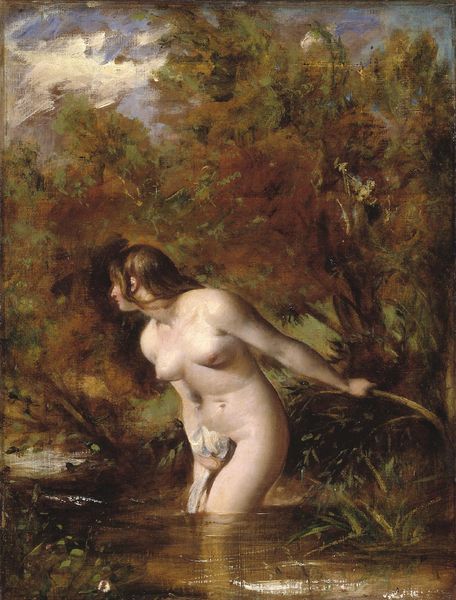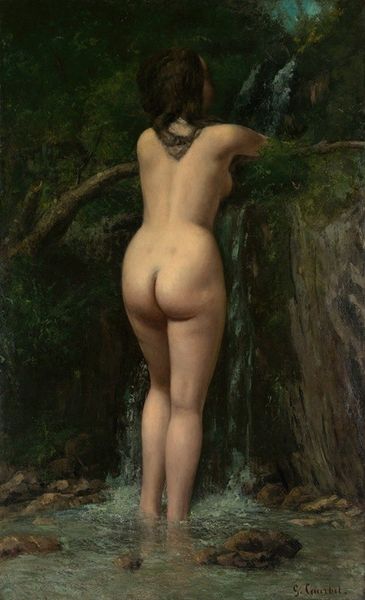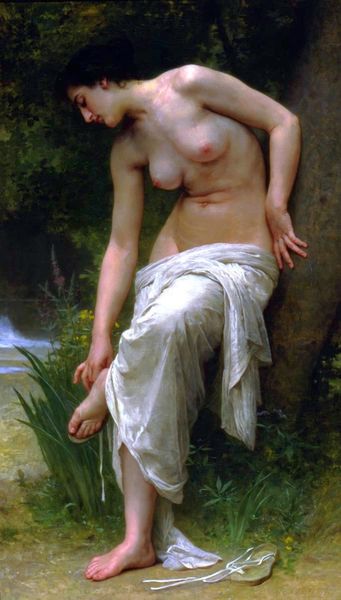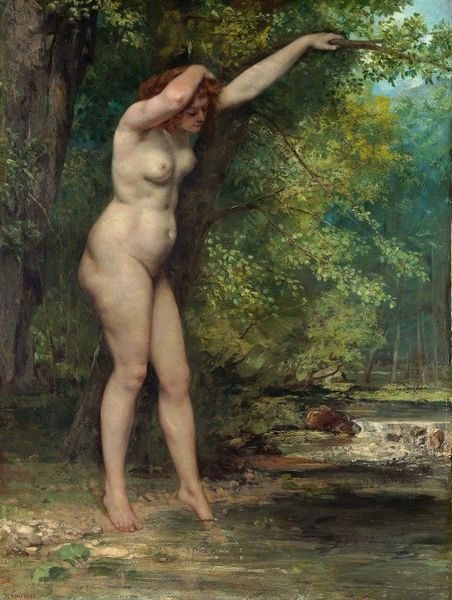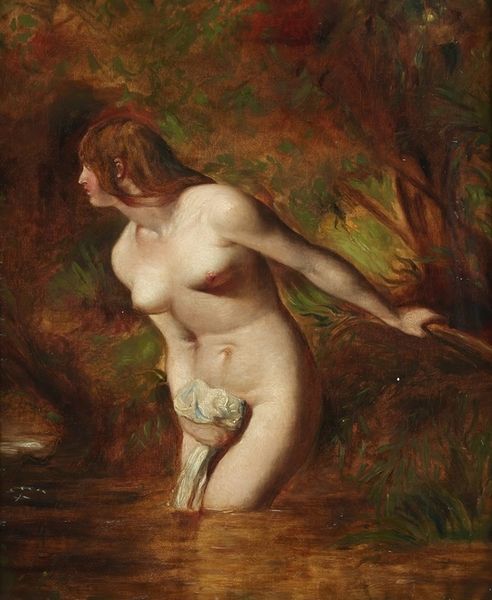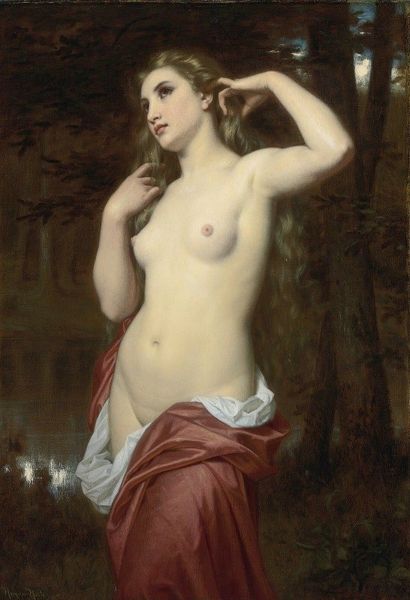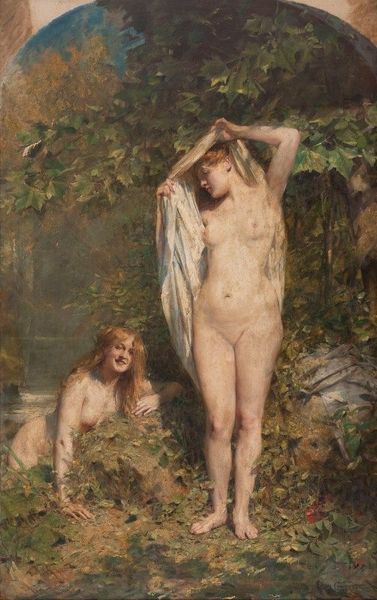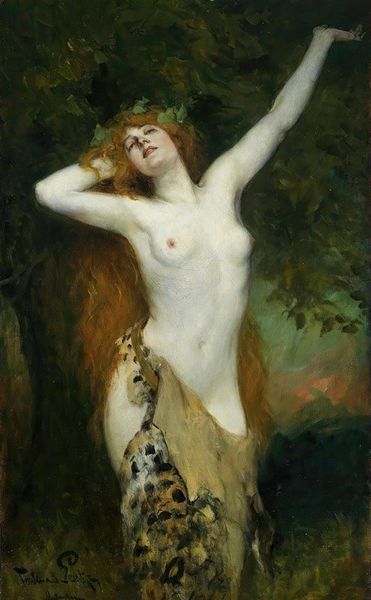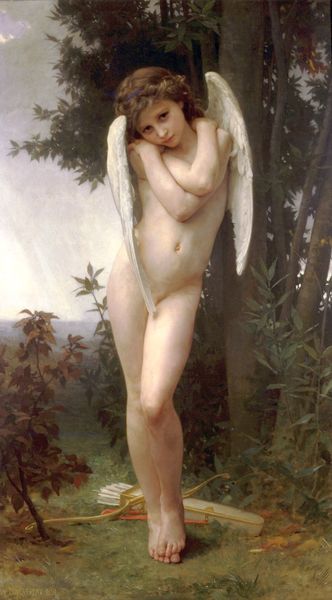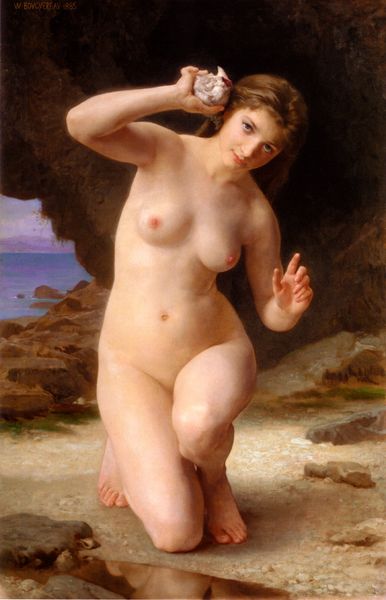
painting, oil-paint
#
figurative
#
painting
#
oil-paint
#
landscape
#
figuration
#
romanticism
#
academic-art
#
nude
Copyright: Public Domain: Artvee
Émile Munier painted La Baigneuse using oil on canvas, a traditional medium capable of rendering the textures of flesh, water, and foliage with remarkable realism. Munier skillfully employs techniques of glazing and blending, carefully building up layers of pigment to achieve luminosity and depth. This was the stock and trade of academic painting. The model, who may or may not have been paid much, was the means by which the painter demonstrated his virtuosity. But she is idealized, existing as a form rather than a person. Consider the labor involved: from the mining of raw materials for pigments, the milling and mixing of paints, to the weaving and preparation of the canvas, and finally, the artist's skilled labor of applying paint. Munier, like many of his contemporaries, relied on industrial production and exploitative market systems to create artworks that would then be sold to wealthy collectors. By appreciating these processes and materials, we can better understand the social and economic context in which La Baigneuse was created. The ‘magic’ of art is always premised on real, material conditions.
Comments
No comments
Be the first to comment and join the conversation on the ultimate creative platform.
